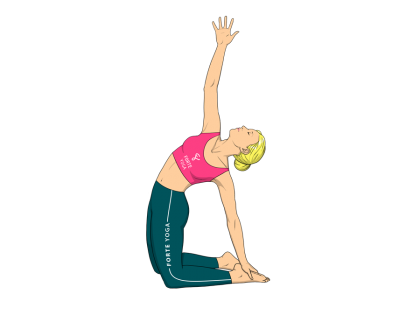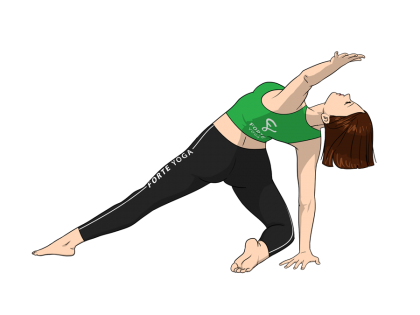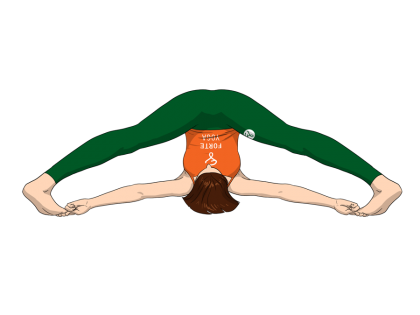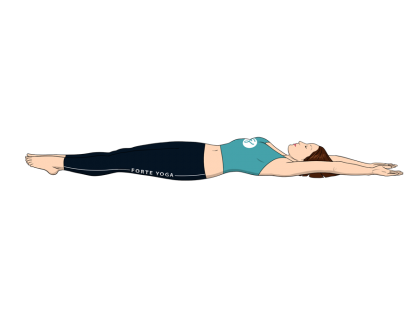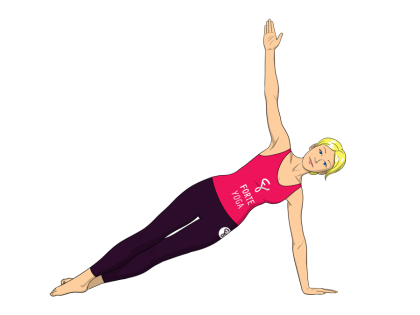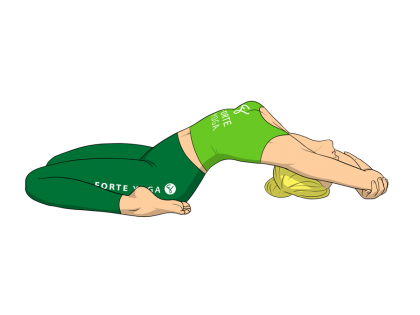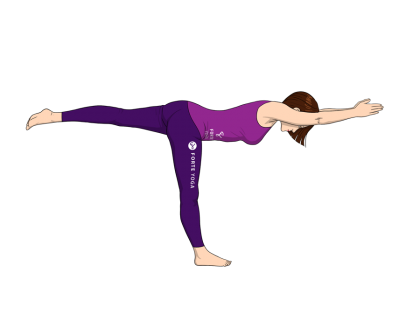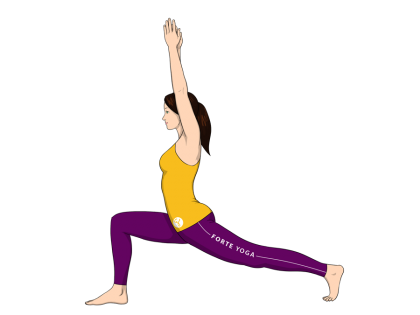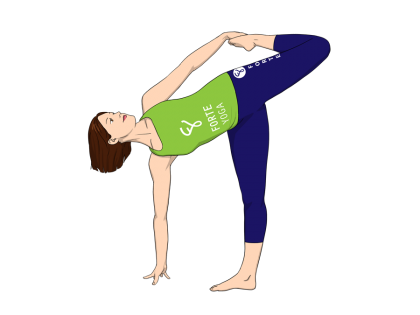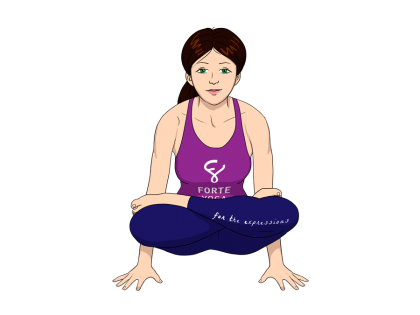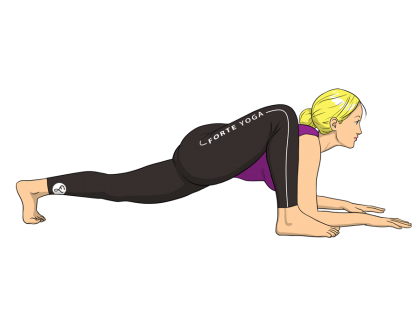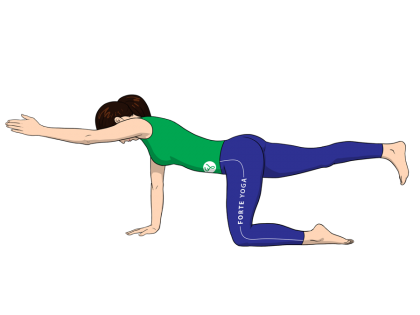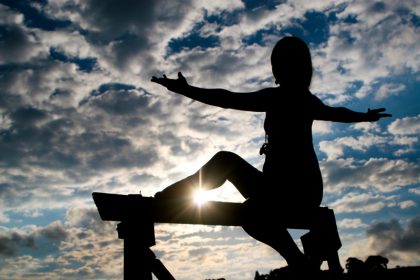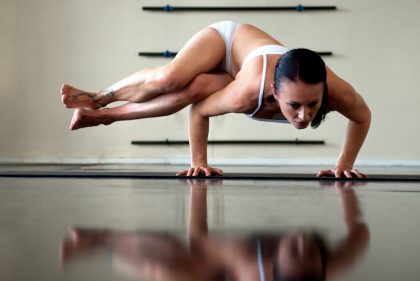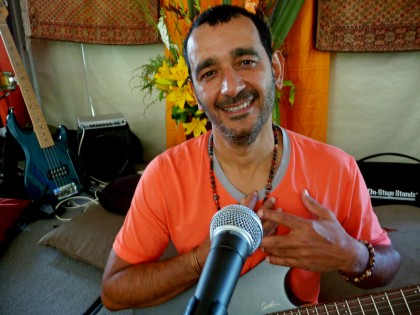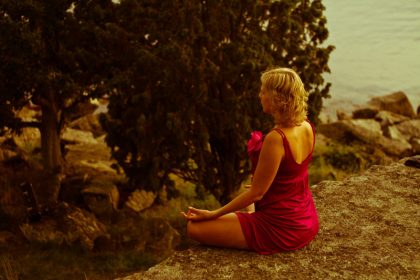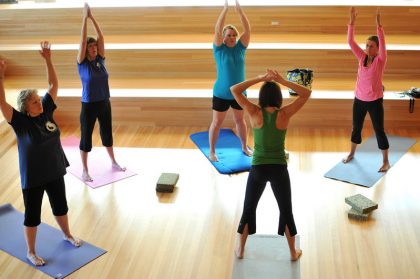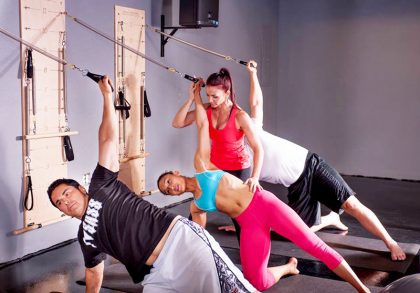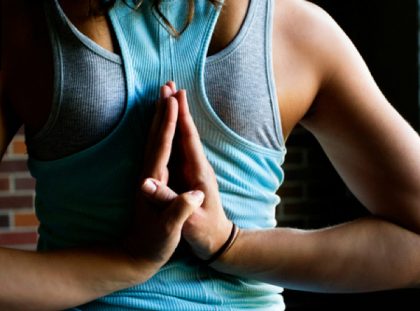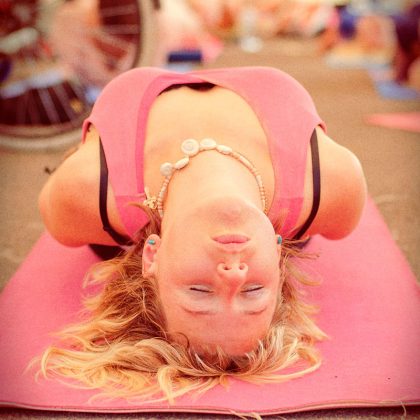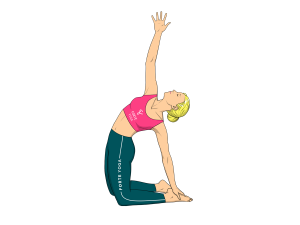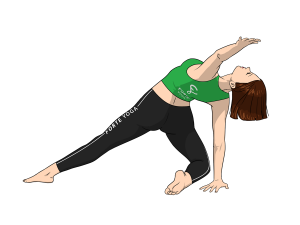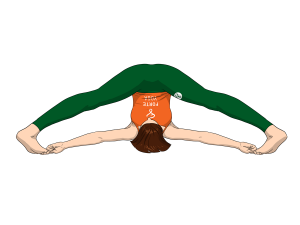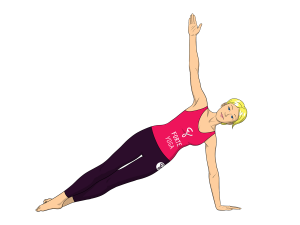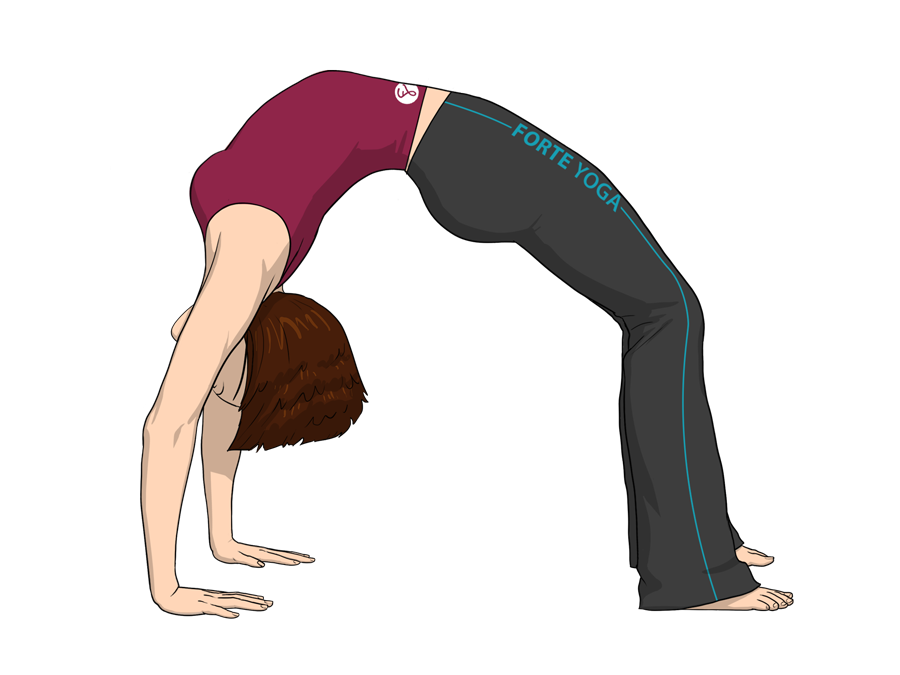
overview
Upward Bow Yoga Pose is a backbend pose that targets the abs and chest and is ideal for yogis and yoginis at an intermediate level.
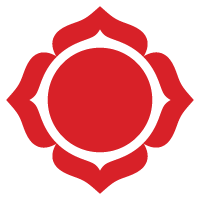 muladhara – the root chakra
muladhara – the root chakrarelated poses
[yoga-sharrre]
How To Do Upward Bow Yoga Pose
- Begin in Corpse Pose (Savasana). Bend your knees and draw your heels toward your hips, placing them as close as possible to your sitting bones. The soles of your feet should be pressed against the floor, hip-width apart.
- From here, prepare your body for the pose by lifting the hips high off the floor, drawing your back up in an arch. Keep your shoulders firmly planted. Your position should resemble that of the Bridge Pose. Hold this pose for a few breaths, keeping your pelvis and torso lifted and your chin up. Lower your hips back to the mat to prepare for the full bow.
- Lift your arms straight up from your sides, leading with the backs of the hands, and bend the elbows as they get closer to the ground. Place your hands on either side of the head, palms down and fingers pointing toward the shoulders. Your elbows should be pointing up at the ceiling, forearms perpendicular to the floor. Keep your elbows pulled inward without crowding around the ears and neck.
- Press your feet into the floor and again lift up at the hips as you did in step 2. Hold for a couple of breaths. Press into the hands once more, then inhale and lift to the crown of your head, lifting your shoulders off of the mat. Keep your shoulders hugged into the back but pulled away from the ears. Hold this position for a couple of breaths as well.
- From here, press evenly into both your hands and feet, exhale and lift your head completely off of the ground. Straighten your arms as you lift, keeping your shoulders and tailbone tightly drawn into the back. Extend your legs as your arms straighten out until you reach the maximum height of your backbend.
- Hold this pose for a few steady breaths, increasing by 5-10 second increments if you’re comfortable. To come out, lower back down to the top of the head. Tuck your chin in toward your sternum before lowering your hips and torso to the ground to prevent neck injury. Repeat if preferred.
Notes
- Breathe deeply through each step.
- Before performing this pose, be sure your body (especially your back) is warmed up. Prepare with other backbends and make sure your muscles are loose; never perform this at the beginning of a workout.
- Do not attempt this pose if you have wrist, shoulder, back or neck injury.
- Do not attempt this pose if you have high blood pressure (hypertension), low blood pressure, heart problems or respiratory ailments.
- Do not attempt if you are suffering from migraines, headaches, insomnia or diarrhea.
Tips
It’s important to keep the feet and knees hip-width apart throughout the backbend. If you find your knees angling out to the sides, try wrapping a yoga strap around the thighs just above the knees, tightened to maintain hip-distance.
Stretches & Strengthens
All Muscles: Abs, chest, quads, groin, back, biceps, triceps, wrists, glutes
Target Muscles: Abs, quads, chest
Health Benefits of Upward Bow Yoga Pose
- Can relieve stress, fatigue and mild depression.
- Can relieve symptoms of asthma, backache, infertility and osteoporosis.
- Improves posture.
- Stimulates digestive organs.

